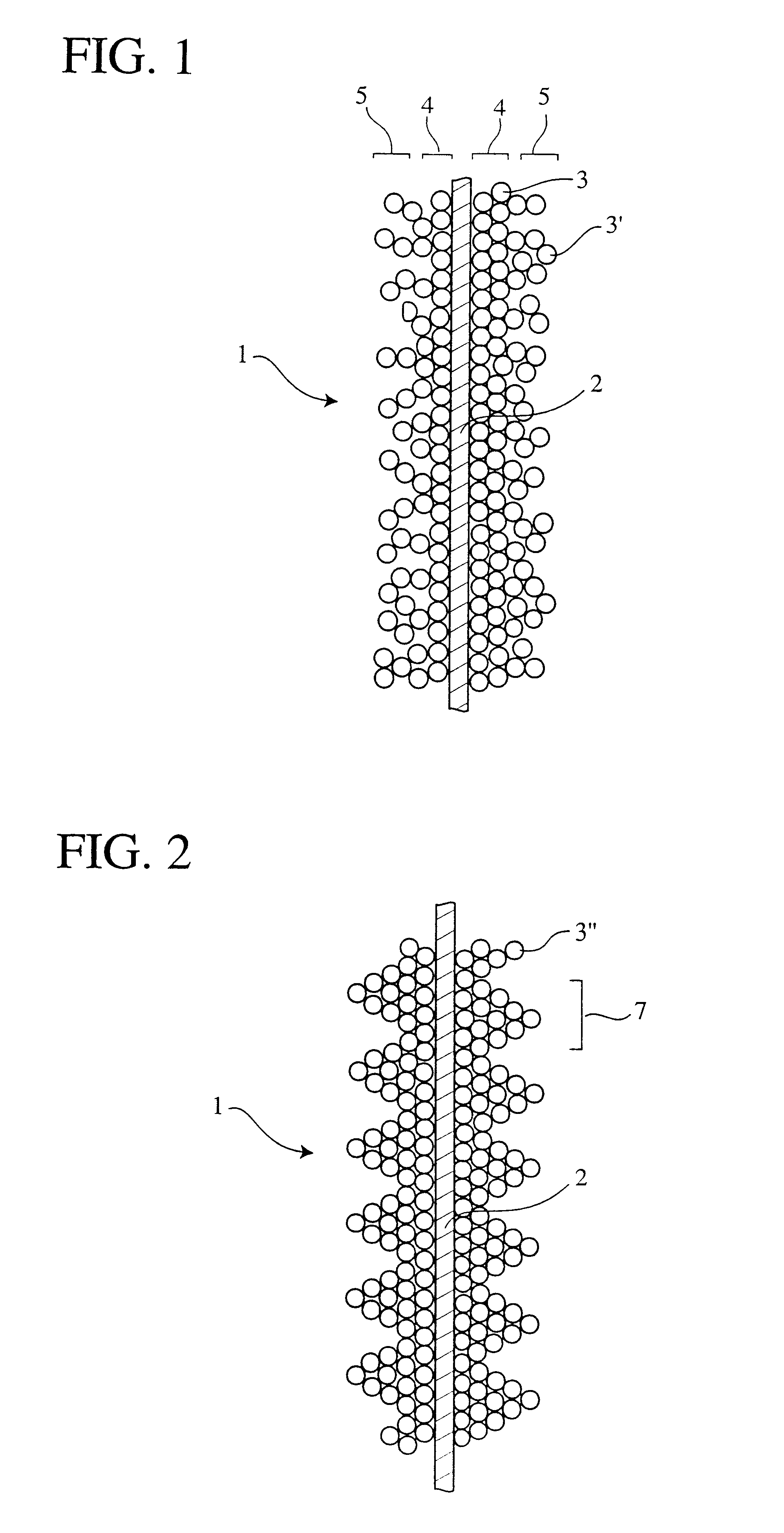Photocatalyst-supporting body and photocatalytic apparatus
- Summary
- Abstract
- Description
- Claims
- Application Information
AI Technical Summary
Benefits of technology
Problems solved by technology
Method used
Image
Examples
example 2
A substrate of 280 .mu.m in thickness was prepared by rolling at a rolling reduction of 30% a wire cloth of plain Dutch weave (#40 / 200 mesh) made of SUS316. An aqueous dispersion of a powder of SUS316L having an average particle size of 30 .mu.m was coated on both surfaces of the substrate in a thickness of 100 .mu.m, and then sintered at 960.degree. C. for 2 hours in a vacuum furnace to form a first particle layer having an average pore size of 30 .mu.m.
After cooling down the sintered product to room temperature, a first mask screen having a plurality of minute holes was put on the first particle layer. The same aqueous dispersion of a powder of SUS316L was screen-printed on the first particle layer through the mask screen. After removing the first mask screen, the coated product was dried at ordinary temperature. Then after putting thereon a second mask screen having a plurality of minute holes which were concentric with and smaller in diameter than those of the first mask screen,...
example 3
On the surface of a wire cloth of plain weave made of SUS316, metal fibers (diameter: 20 .mu.m, length: 5 mm) made of SUS316 were sprinkled, and then sintered at 1100.degree. C. for 5 hours under pressing at 30 g / cm.sup.2. The sintered product was rolled at a rolling reduction of 50% to form a nonwoven metal fabric on the substrate. The rolled product (total thickness: 0.2 .mu.m) had an average opening of 70 .mu.m on the surface. The metal fibers before sintering are photomicrographically shown in FIG. 10, and the metal fibers after sintering and subsequent rolling are shown in FIG. 11. From FIG. 11, it can be seen that the metal fibers are securely bonded to each other at the crossing portions by the sintering.
A 3:7:0.1 mixture (by weight) of a hydrosol of amorphous peroxytitanium (solid content: 0.84 weight %), a hydrosol of anatase titanium oxide (Technology of Art & Original Colors, Inc., TO Sol.RTM., solid content: 0.84 weight %) and a colloidal silica solution (solid content: ...
example 4
The same procedures of Example 3 were repeated except for spray-coating on the nonwoven metal fabric a 3:3:0.1:0.3 mixture (by weight) of a hydrosol of amorphous peroxytitanium (solid content: 0.84 weight %), a hydrosol of anatase titanium oxide (Technology of Art & Original Colors, Inc., TO Sol.RTM.; solid content: 0.84 weight %), a colloidal silica solution (solid content: 0.84 weight %) and a coconut shell activated carbon was spray-coated on the particle layer in a coating amount of 0.6 g / 25 cm.sup.2 (wet basis). After dried at ordinary temperature, the spray-coated product was baked at 300.degree. C. for one hour to obtain a photocatalyst-supporting body of the present invention.
PUM
| Property | Measurement | Unit |
|---|---|---|
| Thickness | aaaaa | aaaaa |
| Shape | aaaaa | aaaaa |
| Area | aaaaa | aaaaa |
Abstract
Description
Claims
Application Information
 Login to View More
Login to View More - R&D
- Intellectual Property
- Life Sciences
- Materials
- Tech Scout
- Unparalleled Data Quality
- Higher Quality Content
- 60% Fewer Hallucinations
Browse by: Latest US Patents, China's latest patents, Technical Efficacy Thesaurus, Application Domain, Technology Topic, Popular Technical Reports.
© 2025 PatSnap. All rights reserved.Legal|Privacy policy|Modern Slavery Act Transparency Statement|Sitemap|About US| Contact US: help@patsnap.com



